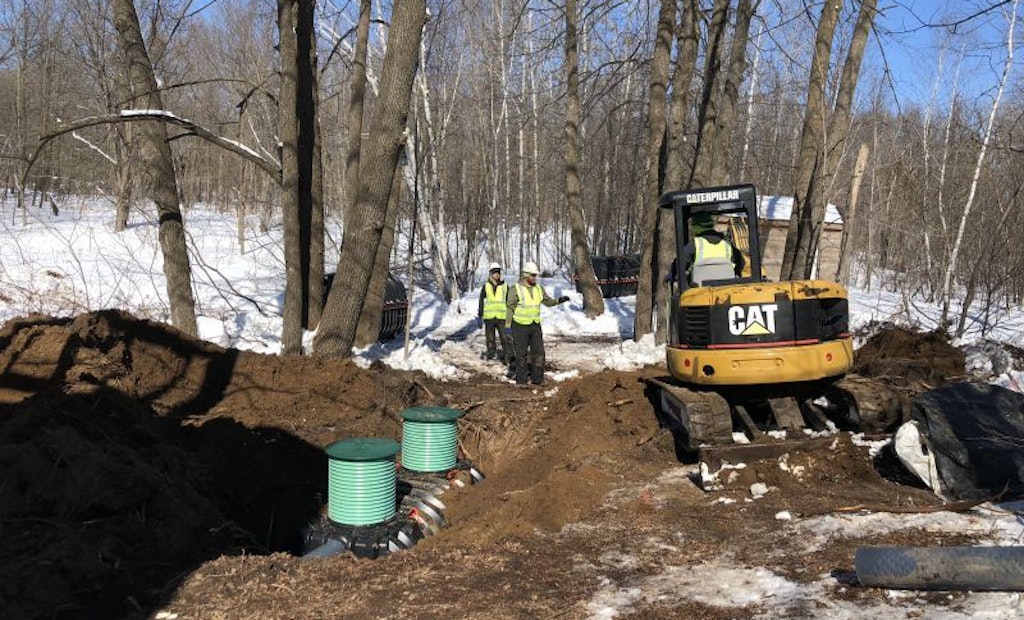
With the tank in the ground, the crew from Septic Check begins putting the soil back. Frost blankets placed over the site in the fall kept the ground soft enough for digging. Pictured, from left, are Brandon Ligneel, Josh Holm and Kyle Wade ran the mini-excavator.
When the polar vortex hit the U.S. last year, you may have noticed that many people — but not all — stopped working. It seems incredible that someone could work efficiently in extreme weather conditions, let alone survive. Yet, we do it all the time, thanks to improvements in...





